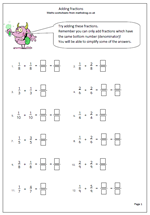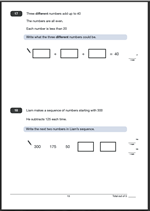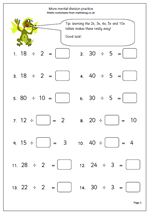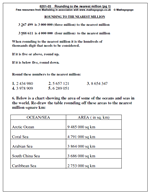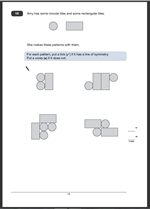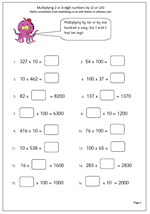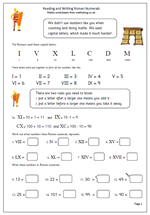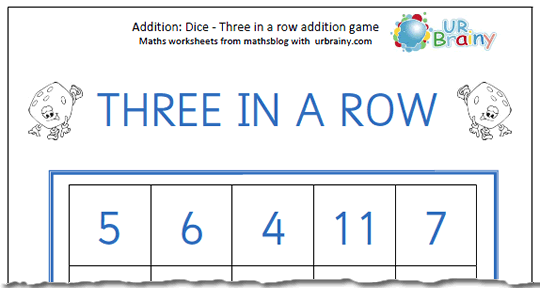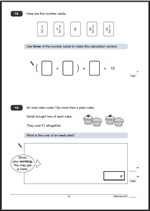 Suddenly the questions become harder as questions 14 and 15 require a little more thought before trying to answer them.
Suddenly the questions become harder as questions 14 and 15 require a little more thought before trying to answer them.
With question 14 a knowledge of what happens when a number is multiplied by a half will give a clue that the most obvious answer involves using the only card without a half on (the 2) as the one outside the brackets. This means that the cards inside the bracket must add up to 5 and is just a matter of finding a pair which add up to 5.
This also assumes a knowledge that the addition inside the brackets is carried out before the multuplication.
The second correct answer given on the SATs answer booklet is much harder to work out and it would require a knowledge that ten divided by two and a half is 4 and then finding two cards that add up to 4.
Another alternative approach is to convert the fractions into decimals and this does make the multiplication easier. Interestingly a correct decimal answer is accepted for the full mark.
Question 15 is worth two marks.
If the answer is incorrect but appropriate working out has been shown, then one mark can be given.
An iced cake costs 10p more than a plain cake.
Sarah bought two of each cake.
They cost £1 altogether.
What is the cost of an iced cake?
There are several ways of looking at this. I would halve £1 to get 50p and then work out in my head two prices 10p apart that make 50p: ie 30p and 20p.
But the SAT testers are thinking about written evidence, so another way is to say that if two of each cake cost £1 then one of each cake would cost 50p. As the iced cake is 10p more expensive, take 10p from 50p which is 40p. Divide 40p by 2 is 20p. As the iced cake is 10p more add 10p to 20p which is 30p.
£1 ÷ 2 = 50p; 50p – 10p = 40p; 40p ÷ 2 = 20p; 20p + 10p = 30p
Another working out, using different thought processes might show:
10p x 2 = 20p; £1 – 20p = 80p 80p ÷ 4 = 20p 20p + 10p = 30p
It must be noted here that that many children will do this more as a trial and error process and find an answer without any working out shown.
Questions 14 and 15 from SATs Paper A 2010
Questions 14 and 15 answers and suggested methods

